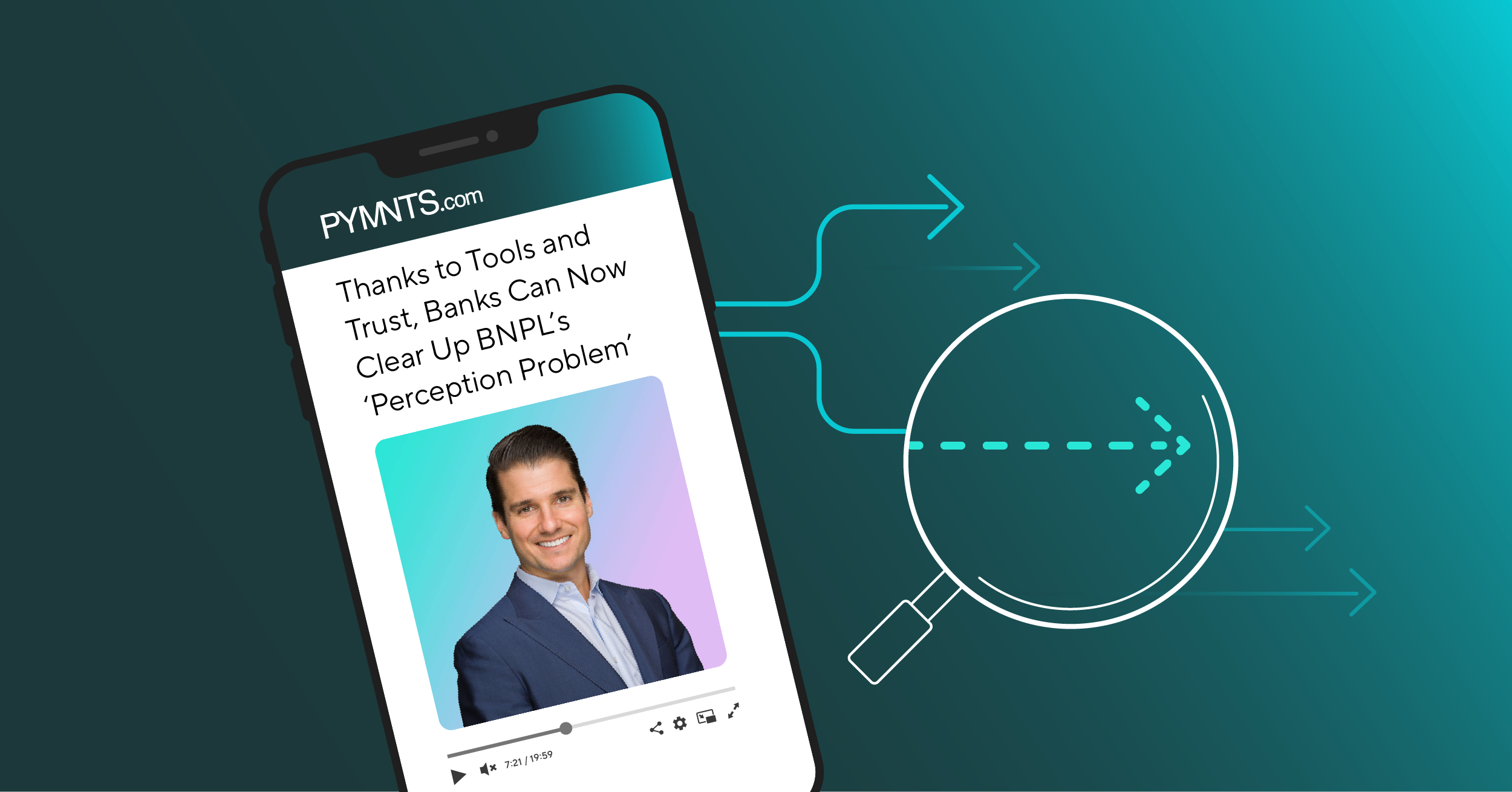
This is a reprint of an article and video that originally appeared on PYMNTS.com on August 17, 2022.
Buy now, pay later (BNPL) has a bit of a perception problem, Adam Hughes, CEO of Amount, told PYMNTS’ Karen Webster.
The conventional wisdom is that the typical BNPL consumer is strapped for cash and credit, and may be a risky bet for providers. However, the reality is far different: It turns out that the BNPL customer is savvier about their finances than many observers might think, and is using the credit offering across digital channels to manage everyday cash flow.
In fact, the typical BNPL consumer profile mirrors that of banks’ most fiscally-sound credit card users — which, in turn, has spurred traditional financial institutions (FIs) to look for ways to bring this burgeoning payment method to clients.
PYMNTS’ own data, gleaned across 1,300 individuals, shows that one in seven shoppers used BNPL in the past six months. Users also tend to skew younger, with millennials and Generation Z well represented.
By offering BNPL, banks can serve a growing demand for BNPL among prime and subprime users. PYMNTS research shows that 45% of users are BNPL only, with a 665 credit score. A similar amount are prime, with credit scores of 747. Only 12% are subprime.
A significant percentage of these consumers are “smart” about their money and budgeting. The writing on the wall is clear for FIs, especially as they seek to provide BNPL functionality to merchant clients: Get it wrong, and the merchants risk losing billions of dollars in sales.
Urgency is building, noted Hughes, especially with the larger banks that have a large merchant network and sizable installed consumer bases who already have credit cards in-hand. The distribution networks are in place, and the merchants want BNPL as an addition to the existing credit cards.
No Cannibalization
Any fears from the banking community that BNPL can cannibalize credit cards are misguided, said Hughes. Simply put, if the banks and merchants do not offer the option, they’ll lose customers. Additionally, the BNPL use cases need not overlap, as BNPL offerings can be tailored to different merchants on a vertical-by-vertical basis.
There’s also the strategic advantage of banks’ being able to offer a holistic view of a consumer’s financial health and standing, to see how those BNPL payments fit within their financial goals (and still afford a purchase).
BNPL then becomes a way to use credit and build credit — especially as bureau reporting becomes more standardized — and also becomes a better way to pay.
Hughes added that banks are already coming out with a range of high-quality reporting standards, and are already thinking about how to use debit cards to embed BNPL offers that come after the sales are made, in a post-purchase experience that has value for the BNPL consumer both in-store and online.
Building on Strengths
Hughes said banks are inherently better positioned to check all the boxes on these regulatory concerns — and to gain ground against digital-only incumbents, especially with the trust that has been built up over decades.
That’s especially important given the recent news that BNPL is in the regulatory crosshairs. Late last year, the Consumer Financial Protection Bureau (CFPB) announced an inquiry into the largest nonbank providers of BNPL products, spotlighting a few key areas of interest: credit bureau reporting, underwriting standards, consumer data protection and disclosures.
It’s a sure bet that BNPL offerings in the future won’t look like what’s in place currently — especially as the industry moves beyond the simple split payments model in favor of installment loans.
“Most banks, and bankers understand that this is an asset class that is here to stay,” he said.
Although they have not been first movers in the space, the greenfield opportunity points to the chance to take significant market share from FinTechs.
The New Cash Flow
Banks have their sights set firmly on BNPL, he said, but are struggling with the ways and means they can leverage to jump into the proverbial deep end. Tacking BNPL onto that existing merchant relationship is an easy place to start conceptually, but getting there is no mean feat — certainly not technically.
Generally speaking, banks may be predisposed to buy or build their own capabilities to embrace BNPL, but Hughes said partnerships (with providers such as Amount) can help craft installment loans in order to offer credit at the point of sale. He noted that partnerships can help facilitate those loans at small and midsized banks that do not have the aforementioned merchant networks in place.
“The platform model can drive and deliver a certain amount of flexibility” in tailoring BNPL programs on a merchant- or even consumer-level basis, he said. In addition, robust data flows can help fine-tune those programs over time, and more closely match payments to consumers’ paychecks and cash flows.
Having the right underwriting infrastructure in place, already tied to traditional credit, is a huge benefit for the bank that tackles BNPL.
“If the banks lean in with the right experience and the right technology,” Hughes told Webster, “they will be big winners in the BNPL space.”

To learn more about how FIs can offer more responsible BNPL offerings, read Amount CEO Adam Hughes' recent Forbes article.
 Read Article
Read Article